Estimated reading time: 4 minutes
Leaf curl is a nasty fungal disease that affects peach and nectarine trees. It can cause considerable damage to your trees and even cause crop losses in bad cases.
By the time your peach (or nectarine) tree has leaves in spring, you can see if it has the disease. Unfortunately, by then it’s already too late to do anything about it!
Related Articles
How to avoid leaf curl by watching for spring
Learning how to avoid leaf curl is all in the timing. The key time to pay attention is very early spring, earlier than you think!
Winter and water for fruit trees
Do your fruit trees need water in winter? Understanding the impact of a wet winter will help you plan for summer.
Dealing with a changing climate in your garden
There’s plenty of proof the climate is changing rapidly, but what does this mean if you’re growing your own food?
Can all fruit trees get curly leaves?
There are many things that make leaves curl on fruit trees. The causes may be pests or diseases, and it can affect all fruit trees, not just peaches and nectarines.
However, the specific leaf curl pathogen (Taphrina deformans) that causes the symptoms you can see in the photo above only affects peach and nectarine trees.
If your tree gets a bad case, it can even affect the fruit. Really bad infections will even make the fruit fail. Infected fruit can fall off while it’s very small before it gets a chance to grow.
Peach fruit is somewhat protected from the disease by its furry skin. Nectarines are a different matter. Their smooth skin makes the fruit much more vulnerable to infection, as you can see from this photo.
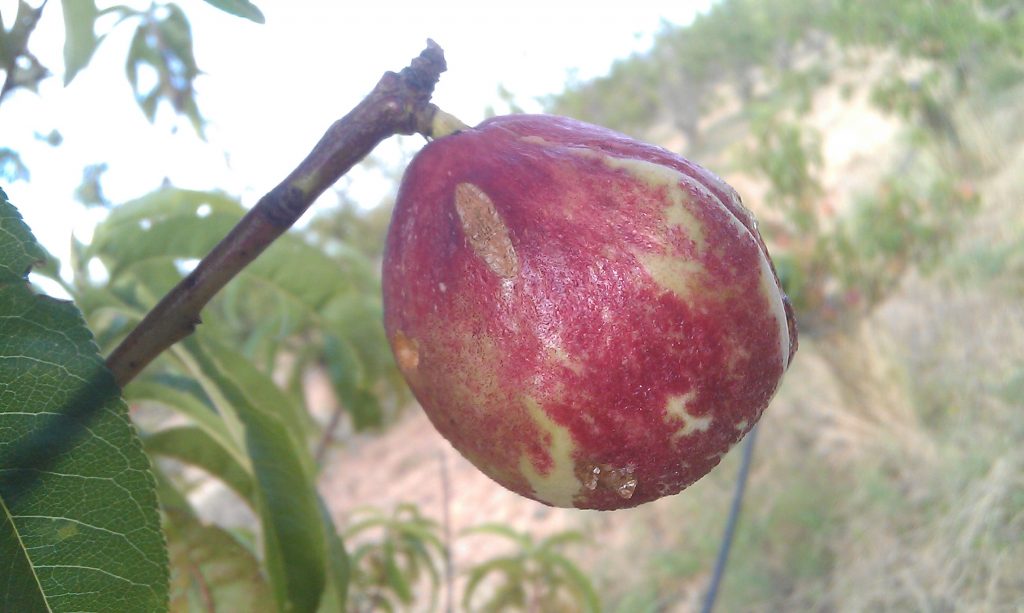
Notice how similar the disease on the fruit looks to the disease on the leaves. You can see the same rough, raised texture and the red colouring.
When should you start monitoring for Peach Tree Leaf Curl?
Peach tree leaf curl actually emerges in spring. However, late winter is the time to start paying attention. This is doubly the case if you saw any signs of this disease last year, or if a wet spring is predicted.
Taking preventive action before the tree wakes up from its winter sleep is your best chance of preventing it from happening again.
When the tree is still dormant in winter, it might seem too early to be thinking about disease prevention, but this is the right time to put out the preventive sprays.
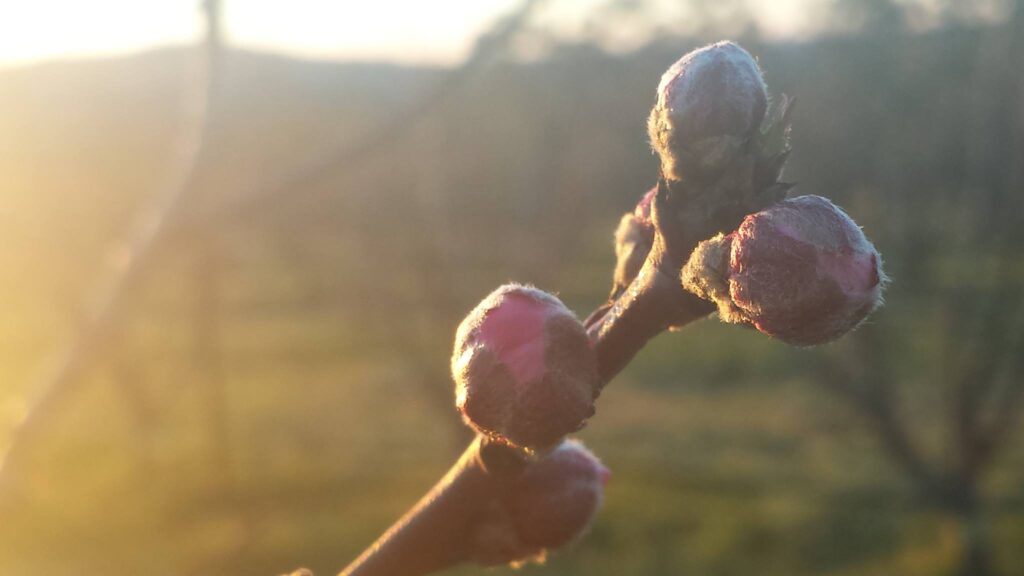
Preventing peach tree leaf curl
The trigger to spray is bud-swell. Different varieties reach bud-swell at different times, which is where the skill comes in.
Depending on where you live and which varieties you have, your trees may already have reached (or be past) bud-swell by mid-winter.
It’s important to be responsive to your trees and the weather conditions, rather than relying on the calendar definition of “spring”.
If your peach and nectarine trees still look completely dormant when you check them, that’s because they are (assuming they’re alive!). From about mid-winter onwards, you need to be monitoring each different variety so you can spray them at the right time.
Choosing the right spray to use
Once you’re sure your tree has reached budswell, it’s time to apply a preventive copper spray.
One of the best options for home use is Bordeaux spray. It’s easy to make at home with these simple instructions. The process involves diluting hydrated lime in water, and copper sulphate in water, then mixing them together.
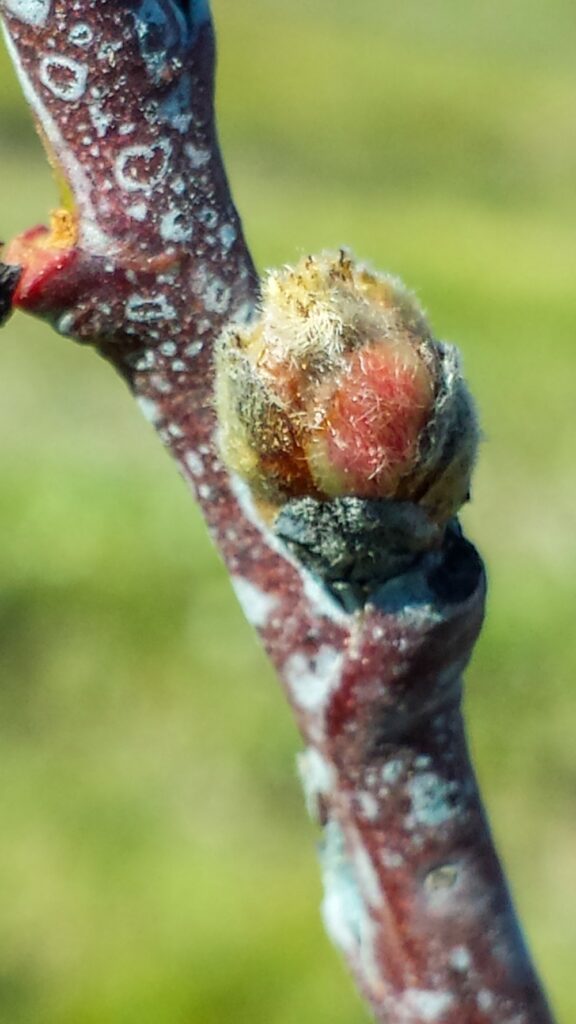
Bordeaux is messy but a great spray to use at home because it’s quite ‘stickable’ and relatively rain-fast. You can actually see the blue spray residue in the photo above.
Sprays containing copper hydroxide (like Kocide) are also OK to use in home gardens, but avoid other types of copper spray. They are not allowed in certified organic growing (so we don’t recommend them for home use) because they are harsher on the environment.
Related Articles
How to avoid leaf curl by watching for spring
Learning how to avoid leaf curl is all in the timing. The key time to pay attention is very early spring, earlier than you think!
Winter and water for fruit trees
Do your fruit trees need water in winter? Understanding the impact of a wet winter will help you plan for summer.
Dealing with a changing climate in your garden
There’s plenty of proof the climate is changing rapidly, but what does this mean if you’re growing your own food?

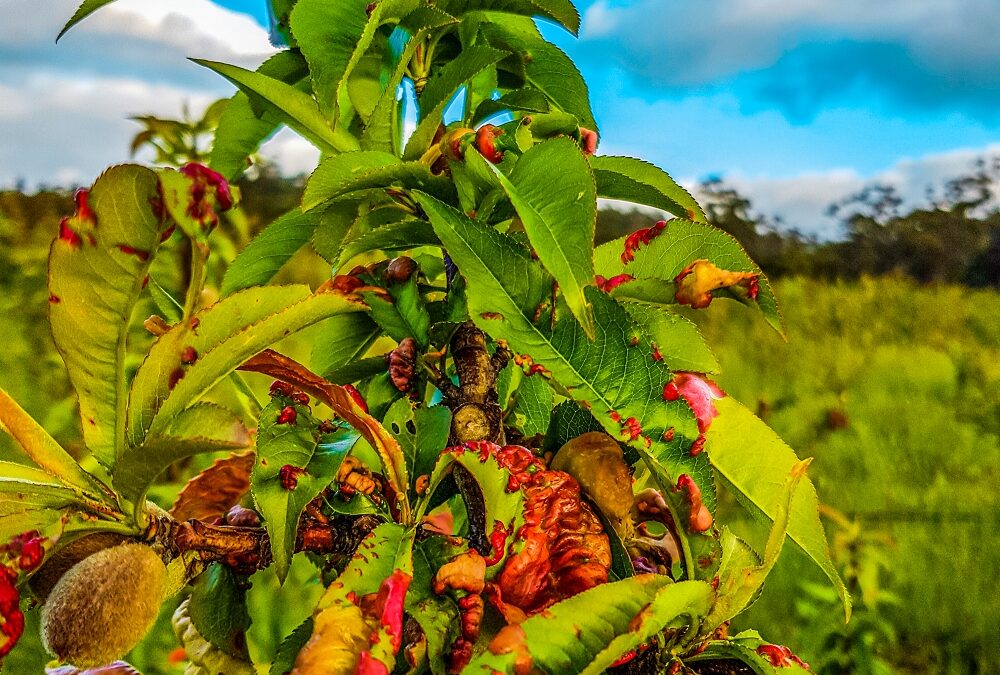

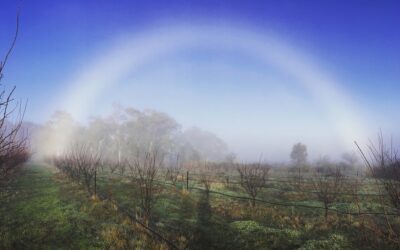
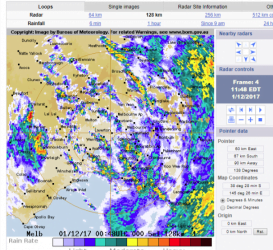


Excellent information thank you. I had a little bit of leaf curl last year on my nectarines but I’ll do this spray to sure it won’t happen! Stink bugs are a bother during summer it was so dry last summer anything organic to rid them please !
Thank you
Elena
Our pleasure Elena, glad it’s useful. We don’t tend to aim to get rid of pests, unless they’re actually doing damage to the fruit or the tree, and then we look for a way to interrupt their lifecycle so they can’t do the damage. It’s probably best explained in this short course (called Grow Great Fruit Without Chemicals): https://growgreatfruit.com/product/grow-great-fruit-without-chemicals/. Best of luck with the stink bugs.
I’ve had green vegetable bugs…very large green shield bugs that stink when you squash them…no info on them that I could find other than squashing them and hopefully finding the eggs on back of usually bean leaves…but then found something saying that may be not watering enough etc so plants stressed…I was a bit lazy about it but now do more. Saw a few last year but not the numbers I had a few years ago. It was like a plague and had to cut stuff down and whack it onto path to make the babies fall out and I’d stomp on them….You can look at the backs of leaves. Lots of the adults were on my potatoes and in the calendula/marigolds so they all went into the green bin etc. If babies which are little black and white beetle looking things all over tomatoes I figure get a cup of water with liquid soap on it and just dip the whole tomato in it. The soap will get them. If you spray with soapy water they seem to just fall to ground and hide. Adults supposedly come up the plant early in day with softer sunlight. You can forage for them then and squash a few. I think they breed in the heat. Good thing about colder winters is that it maybe knocks out the overwintering ones. They change to a brown colour and just hide away. Found a lot on cloth I use in the garden folded up on back porch one time. About 7! Gosh I really don’t like them so have been really working on more water and good soil etc.
Hey Chris, thanks for the comment. Were the shield bugs doing damage to your crops, or did you just not like them being there?
Diatomecious earth sprinkled on them works a treat.I also would shake them into a bucket of water. They haven’t come back!
Old vacuum cleaner.
Got ot I. My peach treesthis year. Os there anything I can do
Hi Rick, As we say in the post, spray at early budswell with copper. This can be as soon as late July with some early peaches, so you’ve got to start checking early enough. See the link to the our organic spraying course for more detailed information.
https://growgreatfruit.com/product/better-fruit-with-wise-organic-spraying/
Leaf curl is never a real
Problem here .. but ongoing problems with brown rot every year despite spraying.. one nectarine sjust loses kilos of fruit whilst still hard .. we just watch heartbroken..it’s a late one but so depressing now after 3 years that we are thinking of cutting it down and replacing it an early variety..
Hi Robbie, sounds annoying. What are you spraying with, and when? Brown rot should not be that hard to control.
I recently sprayed a dwarf nectarine that is at budswell with lime sulphur.
Is that as good using copper sprays ?
Hi Alaine, yes lime sulphur is another acceptable treatment, but is more unpleasant to use and much harder on your equipment – make sure you wash it off well, and wear appropriate PPE.
Is copper spray good in organic gardening?
Hi Eve – no, it’s not. It would be much better to avoid using copper spray at all, and our ultimate aim is to create such bio-diverse gardens around our fruit trees that the ecosystem keeps itself in balance and we don’t need to take these types of preventive actions. But until you’ve achieved that, using the minimal amount of copper possible to protect the trees can make the difference between getting a crop and losing a tree. It’s always a balance!
I get what looks like leaf curl on my blood plumb. Apart from spraying with copper, what else can I do?
Thanks
Hi Anna – it’s not Leaf curl, as this particular fungal disease only affects peaches and nectarines. So first thing is to stop using copper spray! Next thing is to try to figure out what IS causing the leaves to curl – aphids are a really typical culprit, so have a look within the curling leaves and see if you can find any evidence.
Unable to travel to our 1 acre block in Wedderburn.(due to Covid19). Thank goodness it is a wet winter so trees should be ok. Growing Feijoa trees from seed in the suburb now. I will be doing some of your on-line courses. The free course was EXCELLENT.
Thanks Astrid for the feedback, and so glad you found the webinar really useful – for anyone that hasn’t done it yet, here’s the link to register – https://growgreatfruit.com/webinar-landing/.
A wet winter will help the trees in terms of soil moisture, but unfortunately it’s wet weather and cool temps that favour germination of Leaf curl spores – hate to tell you that! So when you get a chance to visit the block, if the peach and nectarine trees haven’t passed budswell yet, it would be worth popping on a spray. Good luck with growing your Feijoa trees, those experiments are always so much fun.
Hello Katie and Hugh,
I would be for ever grateful if you could tell me how to rid my blood plum of plum aphid.
We have tried every year for about 5 years to save our leaf and fruit to no avail. Last year we brought Victorian lady birds, which had a feast but were still overwhelmed by the quantity of aphid. Any advice would be much appreciated.
With thanks,
Anna Read.
Hi Anna, spraying a winter oil when the trees are dormant can be helpful in severe cases. We got our peach aphid population under control by spot spraying with home-made melia spray (instructions are in our e-book ‘What’s Bugging My Fruit’, you can find it under short courses. Monitor the trees closely in spring/summer and remove colonies of aphids as you notice them appearing, either by pruning off the ends of the branches (if you can do so without doing too much damage to the tree overall), or by removing by hand. Also continue to encourage a really diverse understory of different flowering plants under and around the tree to build up populations of predator insects.
Are copper sprays better than lime sulphur? If so is Yates liquid copper OK to use?
Lime sulphur is an effective fungicide, it’s just unpleasant to use. Kocide is a more preferred copper option.
I have already sprayed for leaf curl once this season, and currently 10% of buds are open. Can I spray again with these open buds?
Yes, now would be a good time to get a second spray on.
What happens if I spray after some pink is showing in the buds?
That’s fine, it’s just the optimum window for spraying leaf curl is a bit before this.
Hi, we are in a rental that has lots of fruit trees. We love that but have seen that a nectarine and 2 peach trees have a lot of leaf curl unfortunately and lots fruit starting to grow. Is there anything we can do now or do we have to wait for next winter/spring?
Hi Lisa, if the trees are a manageable height, you could pinch off the curled leaves to encourage the green leaves to grow. And a summer prune to help the tree bounce back if it’s been really badly affected. Good luck! Meg – GGF team.
One of my peach trees had really bad leaf curl. Very few healthy leaves. Application of rock dust completely eliminated the problem. Took about two months to rectify the problem.
Hi James, leaf curl is a real nuisaance.
It only affects peaches and nectarines, and only at the very start of spring. The treatment is to spray with copper (eg, Kocide) very early in spring at the first sign of buds swelling, then follow that up 7-10 days later with a second copper spray. That’s it. If you miss these sprays and find you have leaf curl, it is too late to do anything about it until next spring. The trees will grow through the leaf curl as the weather warms up, even with a bad infestation, and the diseased leaves will shrivel up and fall off.
It is unlikely that the rock dust solved the problem.